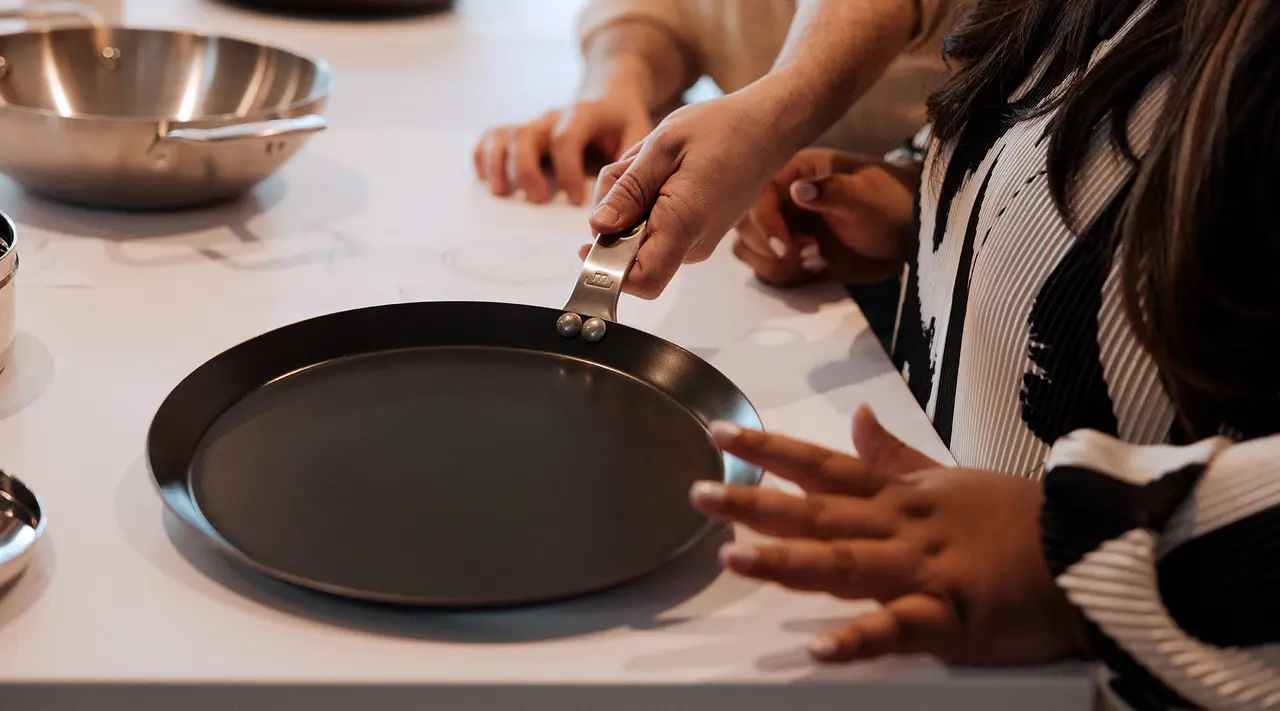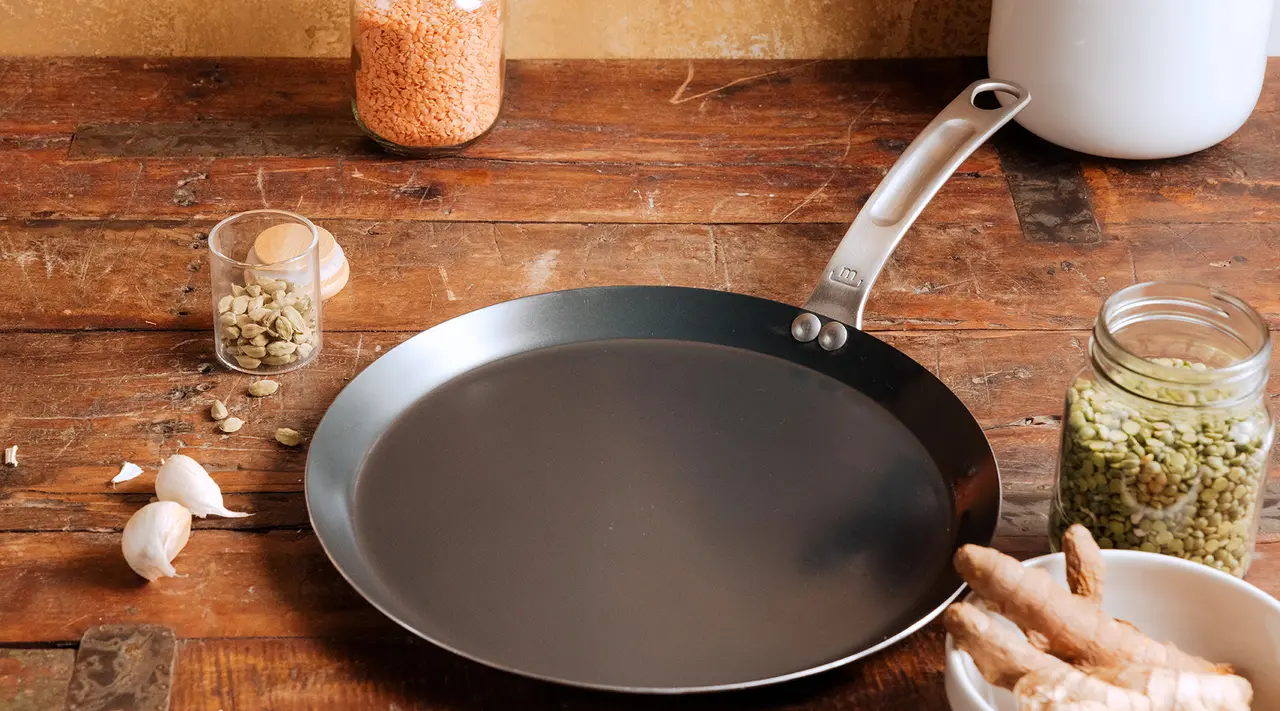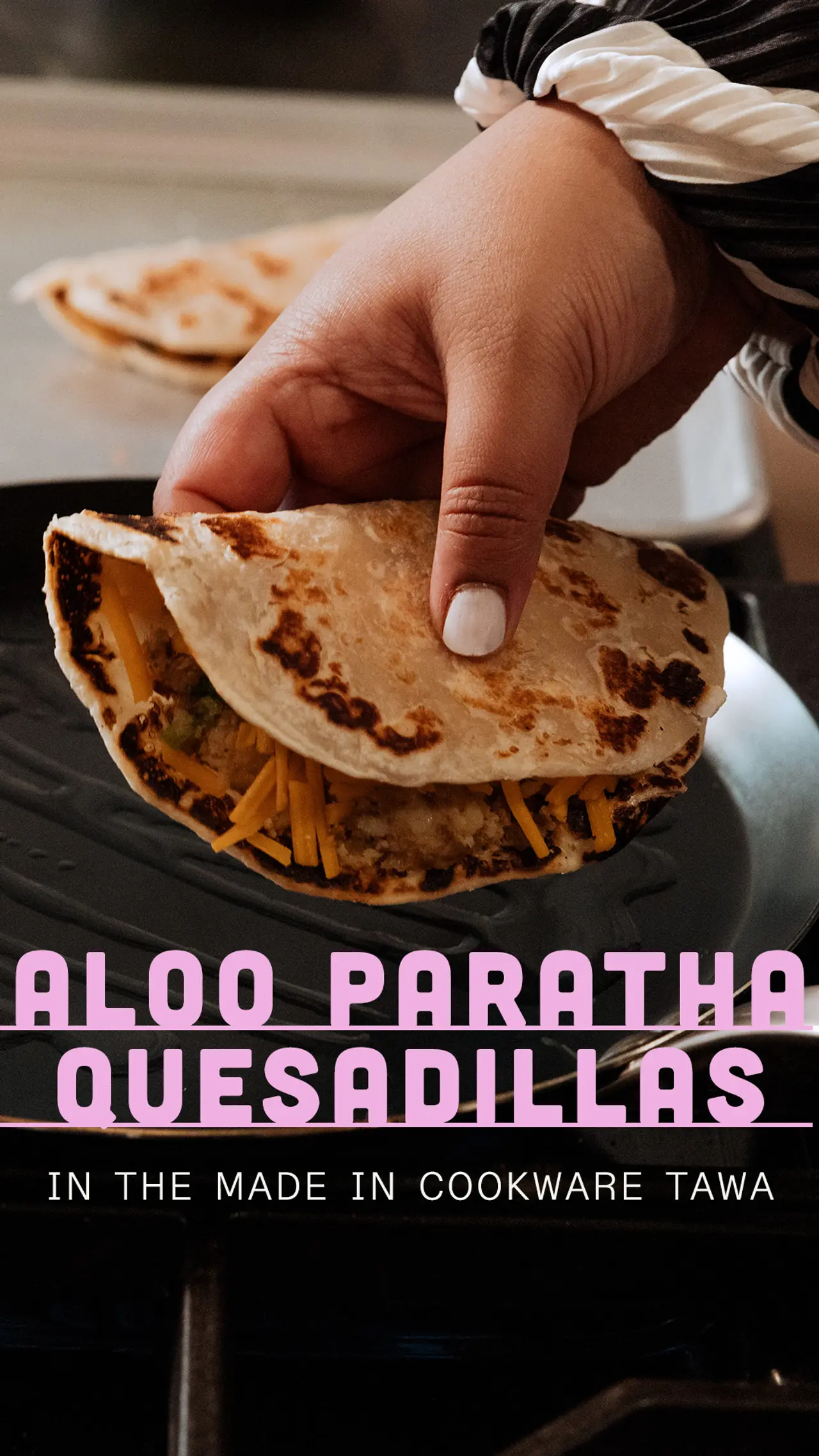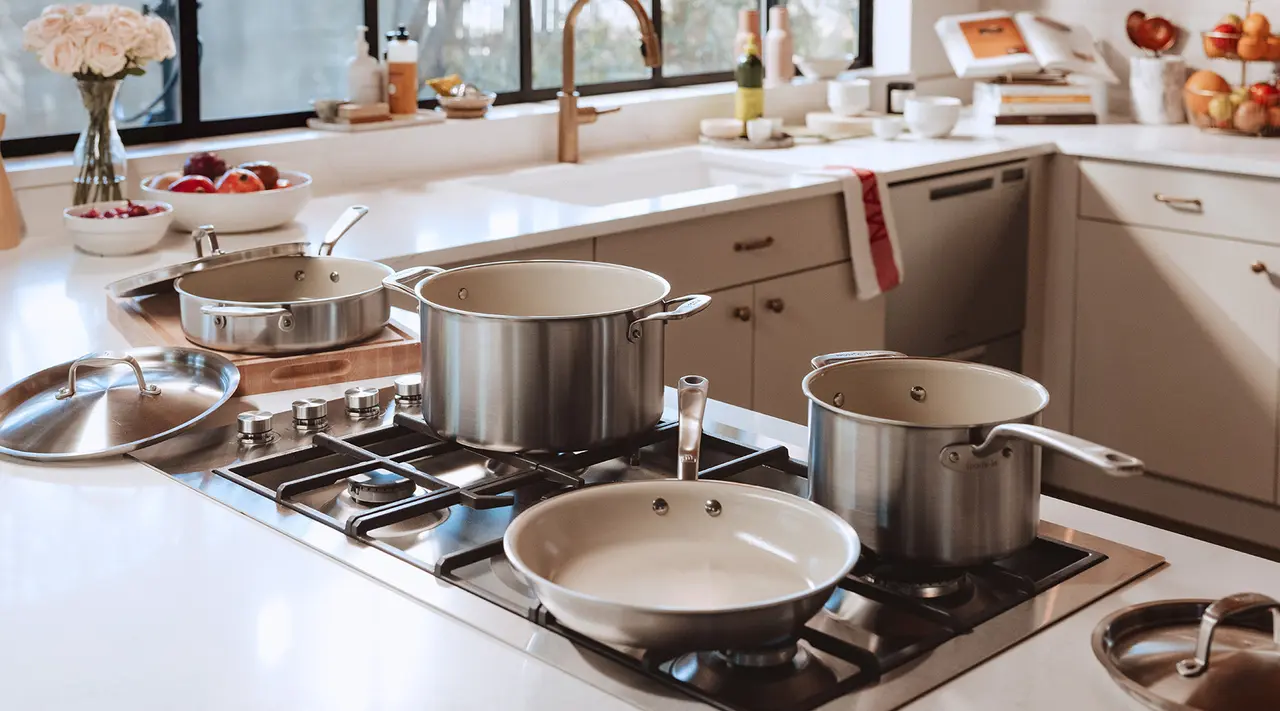While we love popular Indian cookware pieces like the tandoor, we want to shine a light on another traditional South Asian cookware shape: the tawa, also called a dosa pan. This metal pan is used to make chewy, pliant flatbreads like roti and paratha, crispy dosa and Sri Lankan appam (also called Hoppers), and a number of other savory treats.
In honor of our upcoming Amrikan Collection, curated with writer and trusted food expert Khushbu Shah—and named for her debut cookbook—here's the lowdown on our new Carbon Steel Tawa: how it’s made, how to use and maintain it, and—most importantly—all the different kinds of crispy, delectable foods you can make with it.
What Is a Tawa?

The tawa is a wide, flat, circular pan used throughout India, Pakistan, and several other South Asian countries. Commonly used for cooking dosa (a savory South Indian crepe made from fermented rice and lentil batter) and flatbreads like chapati or paratha, the tawa is also useful for shallow-fried or simmered dishes like pav bhaji, a popular street food dish. A version of the tawa is used in Arab countries like Lebanon, Jordan, and Syria, where it’s called a saj, and in various other regions throughout Asia, Europe, and Africa.
Tawas can be either completely flat with a small lip around the edge—a bit like the Mexican comal—or slightly concave. With their wide, flat surface, these pans are perfectly engineered for maximum browning and searing, and occasionally come with a handle for easy flipping and tossing.
While they’re often made from cast iron or aluminum, you can also find tawas made from carbon steel, stainless steel, and even some that are non stick. We tried several materials during the design process for our new tawa, and found that carbon steel made for the tastiest, crispiest dosa.
Why Do You Need a Tawa?
A well-made tawa is versatile enough to cook pancakes, crepes, sauteed dishes, and even pan pizzas—basically, all of the dishes you’d make in a carbon steel frying pan. Ideally, a tawa should be large enough that it can comfortably hold at least one crepe or flatbread at a time (if not more), flat enough to allow moisture to evaporate and encourage browning, and be either concave or have enough of a lip that batters and other liquid ingredients won’t run off the sides.
Additionally, a tawa should heat up quickly, distribute that heat evenly, and respond well to temperature change—especially important for thin, delicate foods like crepes. Like any pan worth investing in, a tawa should also be thin but sturdy enough to hold its shape without warping at high temperatures, and should be relatively easy to clean.
What Is a Tawa Used for?
The tawa is perfect for making roti, dosa, and appam, and can be used interchangeably with a large skillet or comal. Because of the high heat capacity and responsiveness of carbon steel, you can also use our new tawa to shallow-fry fish or meat, get the perfect wok hei on your stir fried noodle dishes, or grill lamb or chicken to perfection.
Tips for Using a Carbon Steel Tawa
If you’re using a carbon steel tawa, the seasoning and cleaning processes will look the same as those for other carbon steel cookware shapes—most importantly, you’ll need to lay down initial layers of seasoning before you use it in order to render it non stick. You can read more about the carbon steel seasoning process in our guide, linked above.
Also like a carbon steel frying pan, a carbon steel tawa will heat up fairly quickly, and maintain a consistent heat throughout the cooking process. This means fewer hot spots or cold spots (and therefore evenly browned food).
Ready to Shop?
If you're still on the fence about an entirely new piece of cookware joining your collection, let us be the first to tell you: the tawa is worth every inch of precious cupboard space. As part of our Amrikan Collection, the Tawa is perfect for anything you want to griddle, sear, or stir-fry.
































